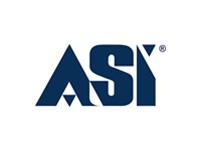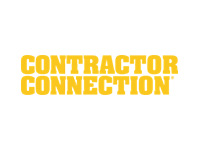Though it may have been the subject of many reality TV shows, hoarding is not something to take lightly. It goes far beyond merely holding onto particular possessions and can negatively impact an individual’s entire life. Strongly linked with obsessive-compulsive disorder, though the two conditions are not identical, it can be a debilitating issue for many people.
In this guide, we will take you through the different types of hoarding and the varying stages of severity. If you or someone you know struggles with hoarding, it is never too late to reach out for help. It isn’t embarrassing, and it isn’t a sign of weakness. Hoarders deserve respect and compassion. Let’s take a deep dive into the various types.
Compulsive Shopping Disorder
In the past, people may have dismissed hoarders as shopaholics. Thankfully, we know better now, as we understand the severe implications this behavior can have.
People with compulsive shopping disorder cannot stop themselves from buying in excess. They often have a total preoccupation with shopping, buying things they usually don’t want or need.
With compulsive shopping disorder, it is common that once the item is home and unpacked, the buyer loses all interest. The object itself was never the attraction but instead the feeling of making a purchase.
The guilt of simply throwing it away afterward is often too great, so items continue to accrue. If left unchecked, this behavior can lead to significant financial stress.
Pet Hoarding
A completely different type is pet hoarding, which many may not have heard of or considered. As its name suggests, this form of hoarding relates to the collection of animals or pet merchandise.
The joy of owning a pet is understandable, but this type often gets out of hand. In some cases, the owner may neglect the pet once they own it or not have the ability to care for it properly.
As is the case with compulsive shopping disorder, the satisfaction of the pet quickly fades. Hoarders of this kind will constantly seek out new pets of varying kinds to satisfy their urges.
Unfortunately, these habits quickly grow out of control. At its worst, this can result in a home full of neglected pets and untended animal waste, which can impact the hygiene of the home.
Nostalgia Hoarding
The final type on our list is more recognizable, mainly because it can apply to so many. Nostalgia hoarding refers to the excess retaining of memorabilia, souvenirs, and photos from previous years. This habit is not the same as retaining family photos or objects of emotional significance. The distinction here is the number.
Nostalgia hoarding can be hard to quantify, but it can refer to holding onto everything related to any life event, regardless of significance. While the significance of life events is subjective, there are certain limits, and nostalgia hoarding crosses them.
We aren’t telling you to get rid of granny’s photo albums, but a lack of discrimination regarding what you keep can be indicative of a problem.
The Five Levels of Hoarding Severity
Like any condition, hoarding has various levels of severity:
Level One
The first stage is where the initial symptoms may arise. It could be noticeable that the hoarder struggles to throw things away, but this may not be obvious. Hoarders at this stage often retain things in secret, hiding them in drawers or cupboards.
Level Two
Severity worsens with level two. This stage indicates a property where hoarded items pile up, blocking the entrance (or other doors). There should be visible evidence of hoarding at this stage, alongside overflowing waste and mold growth. Hoarders may feel too embarrassed to ask for help at this stage, which is how the condition worsens.
Level Three
At this stage, the clutter has extended beyond the limits of the home. Several appliances may have been out-of-order for months but have not undergone repair due to embarrassment. If there are pets, you will likely discover animal waste throughout the home. There may also be evidence of infestation.
Level Four
The mold noted before will have gotten out of hand at this stage, and there should be structural damage. There will be a noticeable odor, and canned goods will have expired. There will be no clean dishes available, and numerous flammable substances will have accumulated throughout numerous rooms. Hoarders themselves may demonstrate poor hygiene.
Level Five
At the final level of severity, there will be numerous examples of severe structural damage to the home. Rooms will no longer be habitable, often with residents forced to sleep on top of or alongside clutter. Depending on the type of hoarding, there may be several pets loose throughout the home, alongside a long-term infestation.
At this point, a hoarder may even refuse to live on their property, staying instead in motels or with friends. This last stage is when hoarding has gotten truly out of control and requires professional help.
Conclusion
If you or someone you love struggles with hoarding, it will likely have taken a toll on your property. At IDC Repair & Restoration, we can return your home to how it once was and prevent future mold infestations. It is never too late to ask for help, and our professionals offer the solutions you require.













